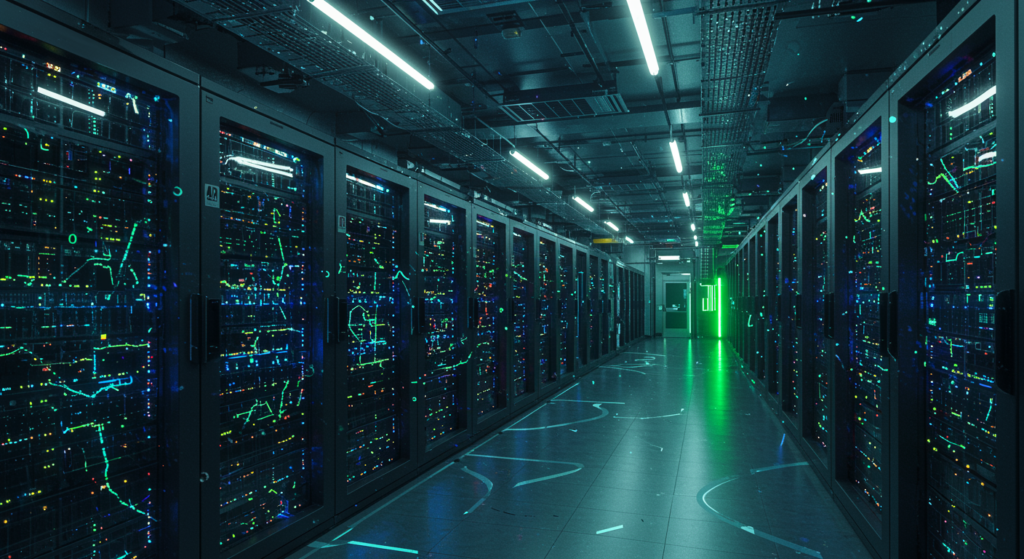
AI Data Center Boom Persists Despite Emerging Pause Trend
In the fast-evolving world of technology, AI data centers stand at the forefront, powering everything from everyday apps to groundbreaking research. Despite whispers of a slowdown in some sectors, the demand for these specialized hubs continues to surge, driven by the insatiable need for advanced AI processing. This growth isn’t just a fleeting trend; it’s reshaping how we handle data, making AI data centers essential for businesses aiming to stay competitive.
What Fuels the AI Data Centers Boom?
AI data centers are experiencing explosive growth thanks to several key drivers that keep the momentum going. For starters, the rise of AI workloads is transforming industries, requiring massive computational power to train models and analyze data in real time. Imagine a world where self-driving cars or personalized healthcare recommendations become the norm—none of that happens without robust AI data centers backing it up.
One major force is the explosion of AI workloads, where machine learning applications demand high-performance hardware like GPUs to crunch through vast datasets. This isn’t just about speed; it’s about efficiency, allowing companies to innovate faster than ever. Technological advancements in semiconductors, especially GPUs, have slashed processing times, enabling complex AI models to evolve quickly and reliably.
Don’t overlook data sovereignty and security, either. With stricter regulations like GDPR, businesses are prioritizing AI data centers that offer fortified environments for sensitive information. Have you ever wondered how your personal data stays protected during AI-driven analytics? It’s all thanks to these secure infrastructures, which are becoming a non-negotiable for enterprises worldwide.
Emerging Trends and Challenges in AI Data Centers
Innovations Shaping AI Data Centers Infrastructure
As AI data centers evolve, they’re incorporating cutting-edge innovations to handle the growing demands. Hyperscalers such as Google, Amazon, and Microsoft are pouring resources into custom AI chips and server designs, optimizing their cloud services for peak performance. This shift isn’t just technical; it’s strategic, helping these giants maintain an edge in a competitive market.
Liquid cooling is another game-changer, stepping in to tackle the heat generated by intense AI processing. By replacing traditional air cooling, it cuts energy costs and boosts reliability, which is crucial as AI data centers scale up. For instance, think about a data center in a hot climate—liquid cooling could mean the difference between smooth operations and frequent downtimes.
Sustainability is also taking center stage. With environmental concerns mounting, AI data centers are adopting renewable energy sources to minimize their carbon footprint. A practical tip for businesses: Start by auditing your current setup and exploring green options, like solar-powered facilities, to align with eco-friendly goals while supporting AI growth.
Navigating Power and Infrastructure Hurdles for AI Data Centers
Even with all this progress, AI data centers face real challenges, particularly around power and infrastructure. Power scarcity is a big one, as rapid expansion into new areas often hits snags with transmission delays, pushing back project timelines. According to a report from Data Center Frontier, these bottlenecks could delay developments by months, if not years.
Regulatory hurdles add another layer of complexity, with utilities scrutinizing new power agreements to avoid risky investments. This means only the most solid, well-funded AI data centers projects are moving forward. Supply chain disruptions don’t help, either—securing essential gear like transformers is tougher than ever, thanks to global shortages.
So, how can organizations adapt? A smart strategy might involve partnering with established providers who have the resources to navigate these issues. For example, if you’re building an AI data center, consider hybrid models that distribute workloads across multiple sites, reducing reliance on a single power source and enhancing resilience.
Future Outlook: Opportunities in Evolving AI Data Centers
Expanding Markets and the Shift to Distributed AI Data Centers
Looking ahead, AI data centers are set to expand into untapped markets, bringing opportunities to regions that were once overlooked. Factors like available land and power are drawing investments, creating a more diverse landscape for AI infrastructure. This diversification isn’t just about geography; it’s about building a global network that supports seamless AI operations.
Hybrid cloud strategies are gaining traction, offering businesses the flexibility to mix on-premise and cloud-based AI data centers. Picture a scenario where a retail company uses hybrid setups to handle peak shopping seasons—it’s efficient, cost-effective, and scalable. By adopting these approaches, companies can optimize resources and respond quickly to changing demands.
One actionable step: Evaluate your current IT setup and experiment with hybrid models. Tools from providers like Microsoft Azure can make this transition smoother, ensuring your AI data centers are future-proof.
AI Innovations Driving Next-Gen Data Centers
Innovations in GPUs and CPUs are supercharging AI data centers, making them faster and more efficient than ever. These advancements are paving the way for generative AI and high-performance computing workloads, which require dense, specialized facilities. As generative AI tools like ChatGPT evolve, the need for robust AI data centers will only intensify.
Consider a hypothetical: A research team developing climate models could leverage these high-density centers to process simulations in hours instead of days. That’s the power of ongoing chip innovations, which are reducing energy use while boosting output. To stay ahead, keep an eye on emerging technologies and invest in training for your team on the latest AI tools.
Overall, the future is bright for AI data centers, with opportunities in edge computing and AI integration across sectors. What excites you most about these developments? Whether it’s healthcare breakthroughs or smarter cities, the potential is endless.
Wrapping Up: The Lasting Impact of AI Data Centers
The AI data center boom is more than a trend—it’s a cornerstone of the digital revolution, adapting to challenges while fueling innovation. As we’ve explored, from driving forces to future opportunities, AI data centers are essential for meeting the demands of modern technology. Despite any pauses, their role in advancing AI processing and infrastructure is undeniable, promising sustained growth for years to come.
If this has sparked your interest, I’d love to hear your thoughts in the comments below. Share your experiences with AI data centers or how you’re preparing for these trends. Feel free to explore more on our site, like our guides to sustainable tech, and don’t forget to share this article with your network!
References
1. “8 Trends That Will Shape the Data Center Industry in 2025” from Data Center Frontier. Visit source
2. JLL Data Center Outlook. Visit source
3. “Data Center Trends 2025” from TECEX. Visit source
4. “How AI is Influencing Data Center Infrastructure Trends in 2025” from Equinix Blog. Visit source
5. “The Multifaceted Impact of Artificial Intelligence in 2024 and 2025” from CoreSite. Visit source
6. “Four Key Trends Disrupting Data Centers in 2025” from Data Center Dynamics. Visit source
AI data centers, data center trends, AI infrastructure, AI workloads, AI processing power, sustainable data centers, hybrid cloud strategies, generative AI, high-performance computing, data center challenges







